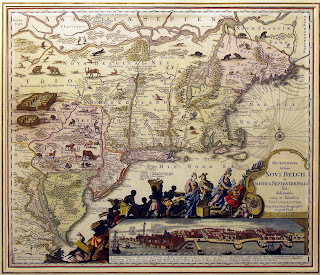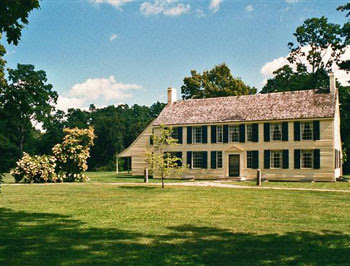 The public is invited to experience the Revolutionary War and the road to American independence as the site of the largest colonial fortification hosts two days of battle re-enactments, demonstrations, and living history activities. The annual “Soldiers Atop the Mount” living history weekend takes place at the Mount Independence State Historic Site in Orwell, Saturday and Sunday, July 24 and 25.
The public is invited to experience the Revolutionary War and the road to American independence as the site of the largest colonial fortification hosts two days of battle re-enactments, demonstrations, and living history activities. The annual “Soldiers Atop the Mount” living history weekend takes place at the Mount Independence State Historic Site in Orwell, Saturday and Sunday, July 24 and 25.
Both days offer opportunities to visit the American and British camps and speak with re-enactors whose units portray some of the actual units that garrisoned Mount Independence.
On Saturday, the camps open at 10:30 a.m. with ongoing demonstrations of camp life, a history scavenger hunt, and children’s activities. At 11:00 a.m. visitors can learn how to drill the American way for children and the young at heart- and at 11:30 there will be a choice of guided tours of the camps or attendance at Mistress Davenport’s School.
Later, at 1:00 p.m. there will be an artillery demonstration followed by a 2:00 p.m. reading of the Declaration of Independence and music by the Seth Warner Mount Independence Fife and Drum Corps.
Finally, the day concludes at 3:00 p.m. with a narrated military tactical demonstration with exciting battle action encircling the audience.
On Sunday, the camps open at 10:00 a.m. and the history scavenger hunt is on. At 11:00 see the artillery demonstration, go on a guided camp tour at 11:30 or attend Mistress Davenport’s School, and experience the narrated military tactical demonstration at 1:30 p.m.
The camp closes at 2:00 p.m. Sunday, but at 2:30 p.m. site interpreter Karl Crannell will give a short talk in the auditorium on Gen. John Stark, hero of the Battle of Bennington.
Constructed in 1776 and 1777 on a rugged peninsula jutting into Lake Champlain, Mount Independence was perfectly positioned to defend the southern lake and New England against British attack from Canada.
On the night of July 5, 1777, the American Army under General Arthur St. Clair withdrew from Mount Independence in Orwell and Fort Ticonderoga across the lake after British General John Burgoyne sailed down, planning to split New England off from the rest of the colonies.
Faced with a British force more than twice his size that had occupied high ground from which they could bombard him with impunity, St. Clair abandoned the fortifications without a fight.
Two days later at the Battle of Hubbardton soldiers from Vermont, Massachusetts, and New Hampshire fought in a savage rear guard action to halt Burgoyne’s army.
The fact that these actions preserved the army while stopping the British advance –helping lead to the stunning American victory in October at the Battle of Saratoga – didn’t prevent an outraged Congress from officially censuring St. Clair for the loss of the forts.
He argued that his conduct had been honorable- demanded review by a court martial- and was ultimately exonerated. The British and Germans occupied Mount Independence until November of that year.
Tickets are $6.00 for adults and free for children under 15. This includes admission to the event, the museum, and access to all the trails.
Mount Independence, a National Historic Landmark, is near the end of Mount Independence Road six miles west of the intersection of Vermont Routes 22A and 73 in Orwell and is one of the nation’s best-preserved Revolutionary War sites.
It includes an air conditioned visitor center and museum and nearly six miles of hiking trails, including the award-winning Baldwin Trail, which meets outdoor standards for handicapped accessibility and features new interpretive signs.
Call (802) 948-2000 for more information or visit www.HistoricVermont.org/sites.
Photo: American Revolutionary War Soldiers firing at Mount Independence. Courtesy Vermont Division for Historic Preservation.
 Firth Fabend will give a series of lectures presenting a brief overview of the Dutch people who settled in the Hudson Valley in the 17th and 18th centuries. She illustrates her talk with eighty slides, screened in forty pairs for purposes of comparison. Fabend asks, who were these Dutch people who replanted themselves in the Hudson Valley when it was a wolf-infested wilderness? Why did they come to America? What did they do when they got here? And why is their cultural influence still felt in the area today? She examines the importance of the fur trade, the importation of slavery, the patroon system of land tenure vs. the English manorial system, farming practices, family structure, domestic architecture and house furnishings, the religious culture, the winsome beauty of the land, and the schism in the Dutch Reformed Church that paralleled the divisions between Patriots and Tories in the War of Revolution.
Firth Fabend will give a series of lectures presenting a brief overview of the Dutch people who settled in the Hudson Valley in the 17th and 18th centuries. She illustrates her talk with eighty slides, screened in forty pairs for purposes of comparison. Fabend asks, who were these Dutch people who replanted themselves in the Hudson Valley when it was a wolf-infested wilderness? Why did they come to America? What did they do when they got here? And why is their cultural influence still felt in the area today? She examines the importance of the fur trade, the importation of slavery, the patroon system of land tenure vs. the English manorial system, farming practices, family structure, domestic architecture and house furnishings, the religious culture, the winsome beauty of the land, and the schism in the Dutch Reformed Church that paralleled the divisions between Patriots and Tories in the War of Revolution.



